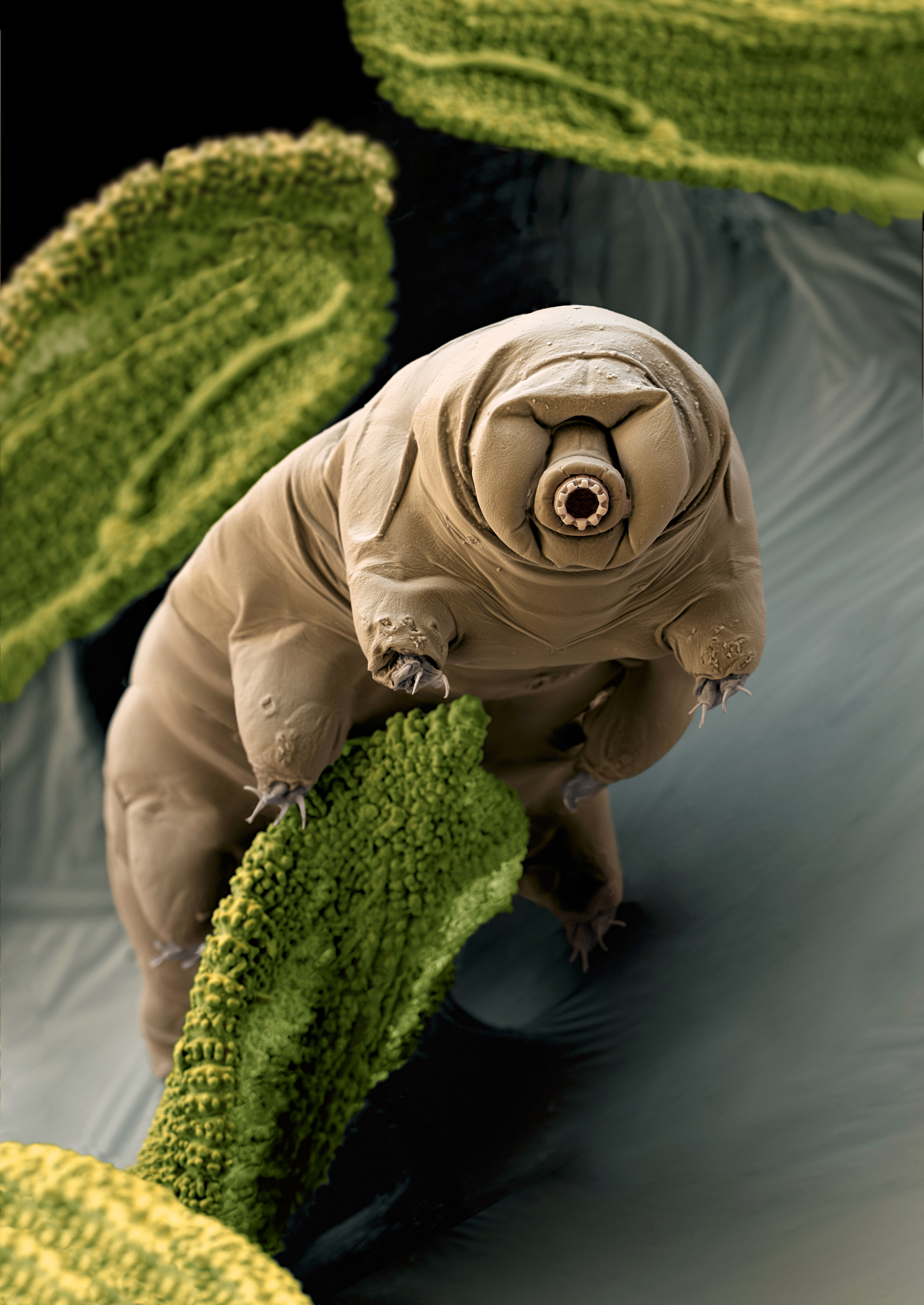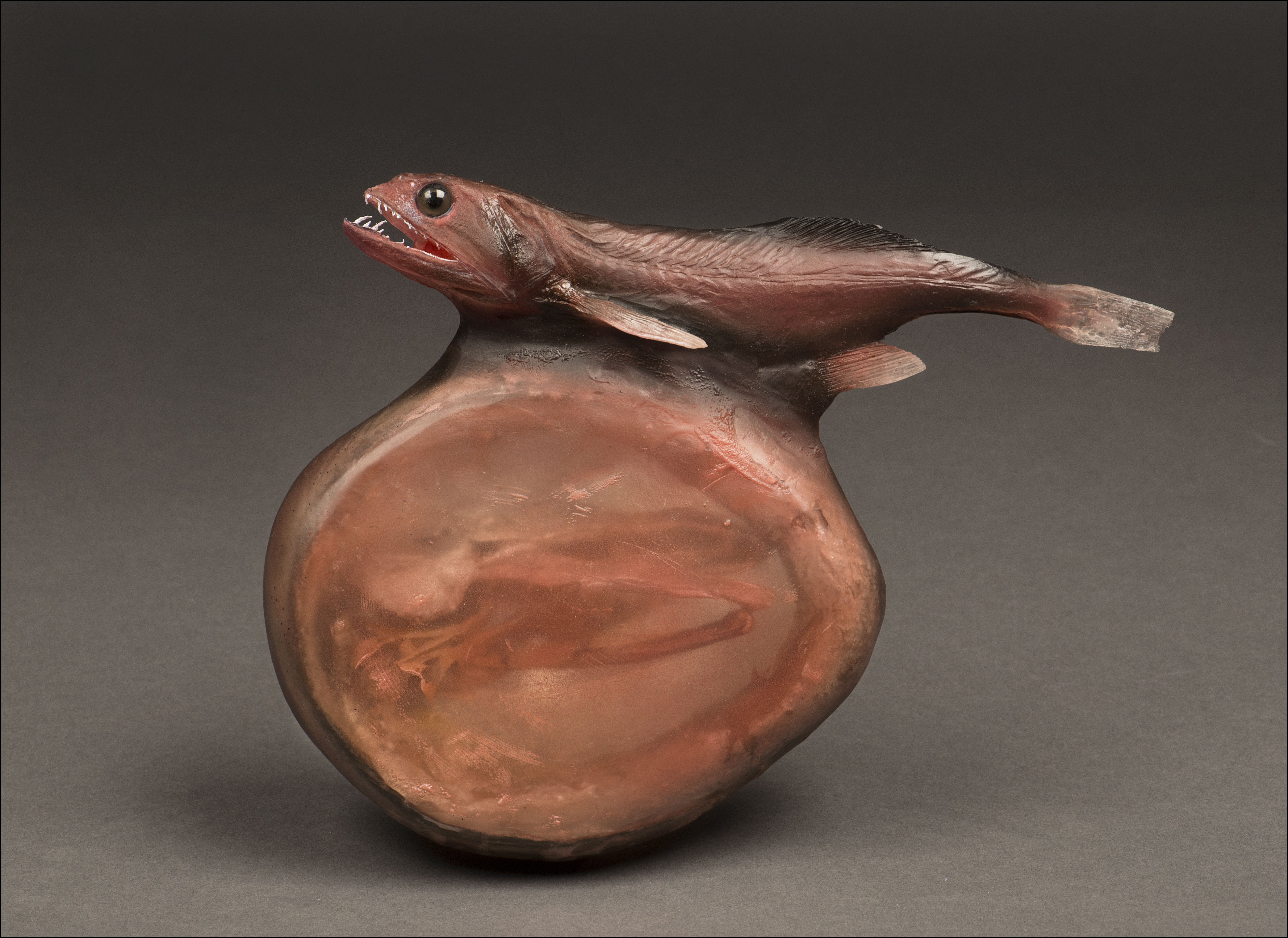Earth's 'Alien' Creatures May Reveal Clues About Extraterrestrial Life

NEW YORK — Animals that survive in some of the most extreme environments on Earth — places once thought to be totally inhospitable — have made scientists think more broadly about where life could exist elsewhere in the universe. How can these tenacious, Earth-bound creatures help space scientists look for life elsewhere in the universe?
A new exhibit at the American Museum of Natural History (AMNH) in New York highlights animals and organisms that demonstrate an extraordinary ability to survive. Some live in temperatures below freezing or above boiling; others can regrow limbs or survive a dose of radiation 1,000 times higher than what a human can withstand.
Mark Siddall, an evolutionary biologist who studies these extreme creatures, spoke with Space.com at the opening of the new exhibit about what the study of strange and extreme organisms on Earth has taught biologists about the tenacity of life, and what exobiologists might search for when looking for signs of life on distant planets and moons. [Extreme Animals from the 'Life At The Limits Exhibit']
"Extraordinary claims — like life on Mars or life on other planets — should require extraordinary proof," said Siddall, who is also curator of the Department of Invertebrate Zoology at AMNH. "I think at least we're getting a better sense of what the range of that proof might look like, because we've got a better handle on the range of possibilities [on Earth]."
Living vs. surviving
The new temporary exhibit at AMNH, titled titled "Life at the Limits," is a good reminder that the word "habitable" is relative. Environments on Earth that would kill a human being have become home to strange organisms and animals.
Take the African lungfish, which lives in shallow pools of water that often dry out. The fish can survive for years without food or water by burrowing into the mud and wrapping itself in a mucus cocoon. There are tubeworms living at the bottom of the ocean that survive in superheated water filled with acids, metals and sulfur.

The expanding list of organisms living in extreme environments on Earth seems to support the idea that life could survive on other planets.
Get the Space.com Newsletter
Breaking space news, the latest updates on rocket launches, skywatching events and more!
"It gives us a sense of the possibilities, but there are limits," Siddall said at a press event for the new exhibit.
Through the discovery of some highly resilient life-forms, scientists have found that all life on Earth requires liquid water (making it particularly important when liquid water is found on planets or moons beyond Earth).
"We know some things can survive [being frozen solid], but they're not living while they're doing it," Siddall said. "They're in a form of suspended animation. They're not in the process of living and respiring and getting nutrition and moving about. They're chillin', if you will."
The tardigrade — one of the most resilient life-forms on Earth — is an example of an animal that can enter a state of hibernation in order to survive through difficult times.
Also known as water bears or moss piglets, these pudgy-looking, eight-legged creatures are about 0.04 inches (1 millimeter) long. The new exhibit at AMNH includes 10-foot (3 meters) models of tardigrades.
Tardigrades have been frozen solid, boiled, dried out, exposed to the vacuum and radiation of space, and lived to see another day. In their state of hibernation, tardigrades' vital systems nearly shut down. The animals can remain in this state for up to a decade. [Tardigrades Survive Naked in Space]
Diversity from change
AMNH is a multidiscipline institute, and Siddall said he's able to discuss the limits of life with colleagues from many different fields, including astrophysics, astrobiology, geology, anthropology and more. He says there are two key points he wants to convey to astrobiologists searching for life elsewhere: look for diversity, and don't overinterpret results.
Studying extreme life-forms on Earth has shown evolutionary biologists that the weird and wonderful diversity of species on Earth arises in large part due to changes in the environment, Siddall said. In very static environments (like places deep in the open water of the ocean, away from sunlight and food sources), microorganisms don't accumulate very many mutations, and the species doesn't tend to evolve.
The lesson for exobiologists is that more advanced life-forms are more likely to arise in environments that experience change.
"You want to look at a dynamic planet, as opposed to a very static planet," Siddall said.
Mars has undergone significant changes in its lifetime — the desert landscape that exists today may have once contained oceans and rivers of liquid water.

Excitement has surged recently as missions to study Mars have turned up signs of methane, a common byproduct of organic processes. (Organisms ranging from microscopic organisms to mammals produce methane.) But as scientists studying Mars are well aware, there are also nonorganic sources of methane, and Siddall cautioned against overinterpreting these findings.
Moreover, just because a planet has environments where life could survive, that doesn't guarantee that life did arise.
"We have a good sense of where life can arrive," Siddall said. "We don't have a good sense of how it will arise in the first place. And that's the Holy Grail, in some respects, of biology."
As the search for potentially habitable planets in the universe accelerates, the study of life on Earth may serve as a basis for finding life elsewhere.
Follow Calla Cofield @callacofield. Follow us @Spacedotcom, Facebook and Google+. Original article on Space.com.
Join our Space Forums to keep talking space on the latest missions, night sky and more! And if you have a news tip, correction or comment, let us know at: community@space.com.

Calla Cofield joined Space.com's crew in October 2014. She enjoys writing about black holes, exploding stars, ripples in space-time, science in comic books, and all the mysteries of the cosmos. Prior to joining Space.com Calla worked as a freelance writer, with her work appearing in APS News, Symmetry magazine, Scientific American, Nature News, Physics World, and others. From 2010 to 2014 she was a producer for The Physics Central Podcast. Previously, Calla worked at the American Museum of Natural History in New York City (hands down the best office building ever) and SLAC National Accelerator Laboratory in California. Calla studied physics at the University of Massachusetts, Amherst and is originally from Sandy, Utah. In 2018, Calla left Space.com to join NASA's Jet Propulsion Laboratory media team where she oversees astronomy, physics, exoplanets and the Cold Atom Lab mission. She has been underground at three of the largest particle accelerators in the world and would really like to know what the heck dark matter is. Contact Calla via: E-Mail – Twitter









